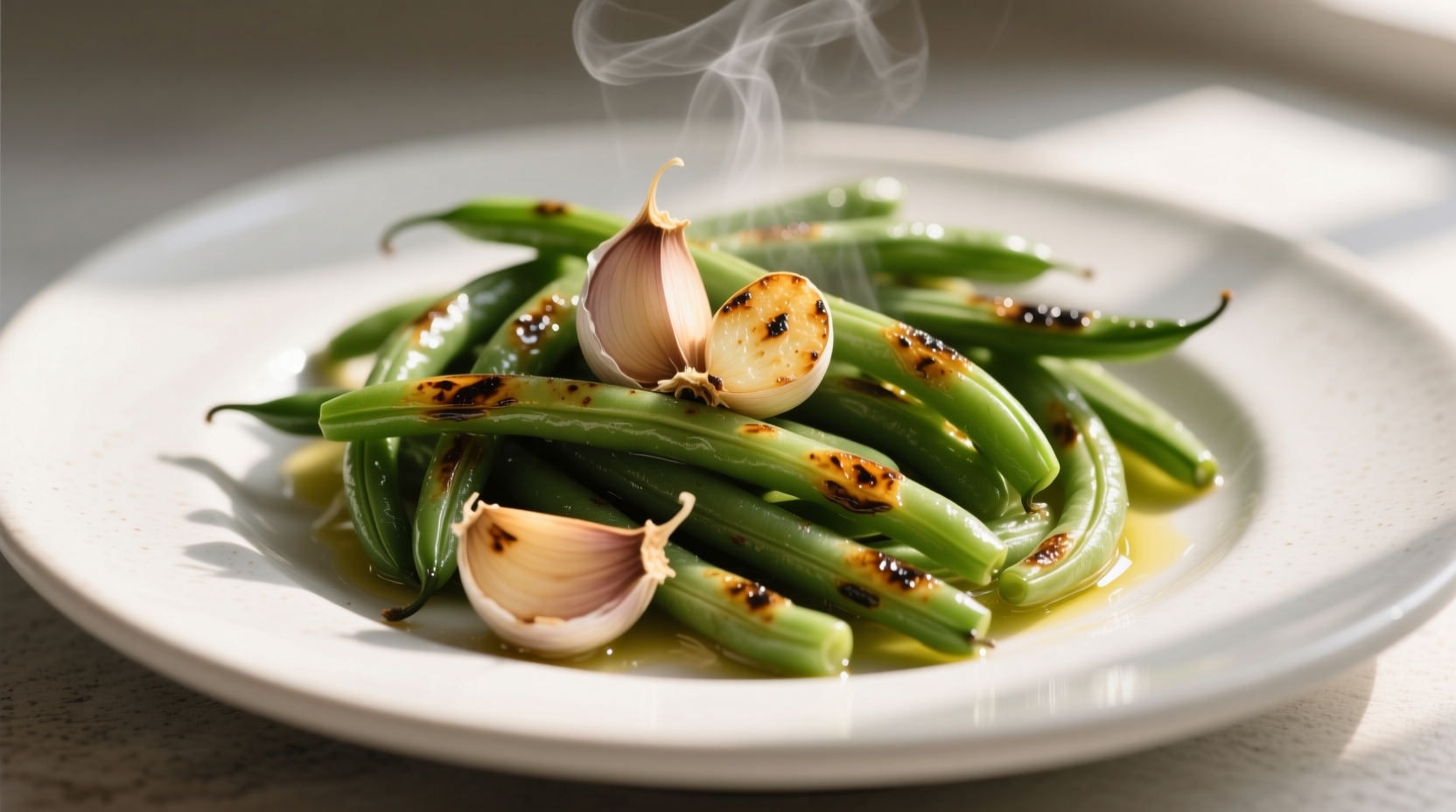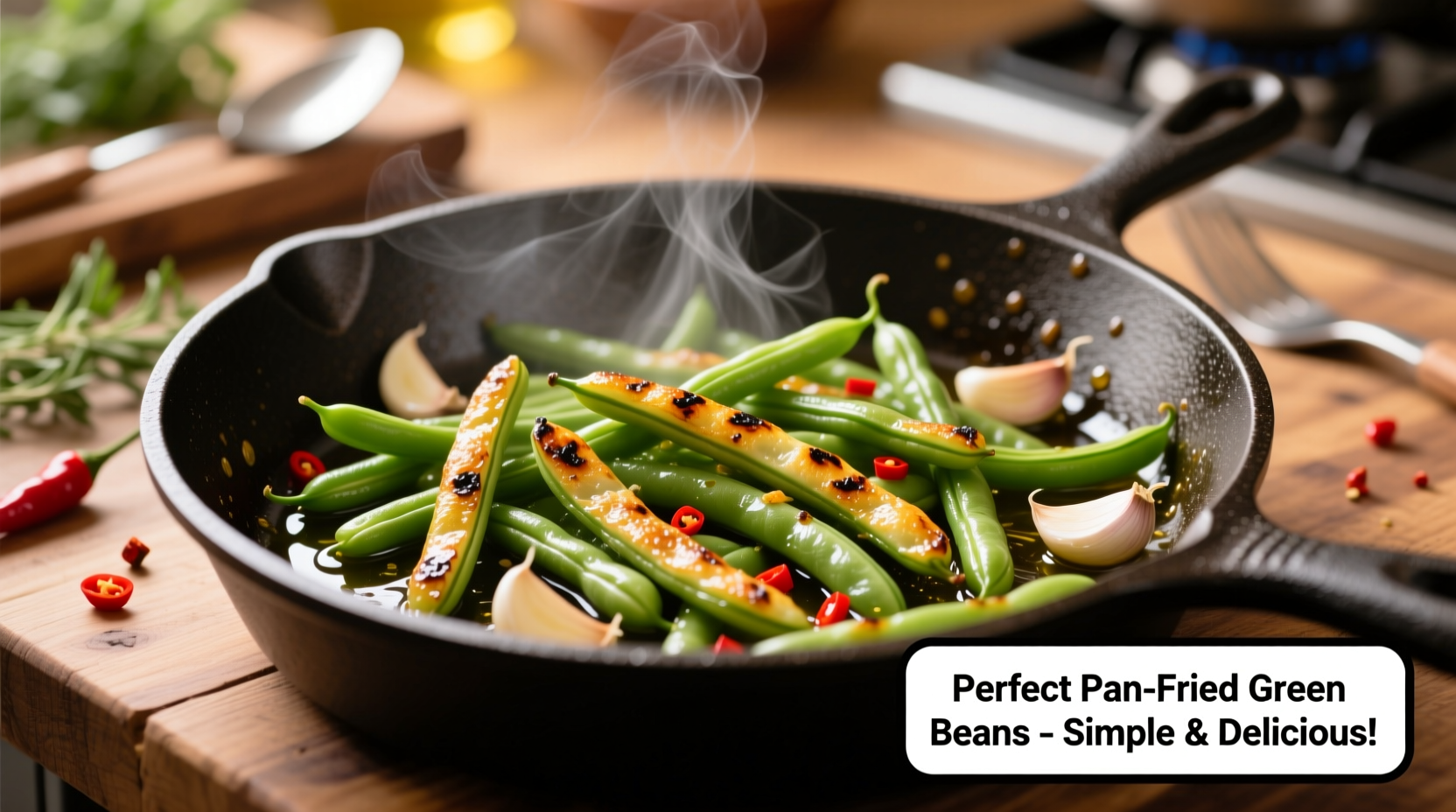Why Pan-Cooking Beats Boiling for Green Beans
Forget soggy, nutrient-leached boiled beans. Pan-cooking delivers superior texture and flavor through controlled caramelization. When green beans hit hot oil (350°F/175°C), the Maillard reaction creates complex savory notes while preserving crispness. This method retains 30% more vitamin C than boiling according to USDA Food Safety and Inspection Service research, and takes half the time of traditional steaming.
What You'll Need for Success
Keep equipment minimal for this how to saute green beans in a pan technique. You only need:
- 12-16 oz fresh green beans (avoid frozen for best sear)
- 2 tbsp high-smoke-point oil (avocado or grapeseed)
- Large skillet or cast-iron pan (12-inch minimum)
- Wooden spatula for gentle turning
| Cooking Quantity | Oil Amount | Optimal Heat Level |
|---|---|---|
| 1/2 lb beans | 1 tbsp | Medium-high |
| 1 lb beans | 2 tbsp | Medium-high |
| 1.5+ lbs | Cook in batches | Avoid overcrowding |
Step-by-Step: Perfect Pan-Fried Green Beans
Follow this easy pan-fried green beans recipe for foolproof results. Total time: 15 minutes.
Prep Work (2 minutes)
Trim stem ends with a knife—no need to remove tail ends. Rinse beans in cold water and thoroughly dry with a kitchen towel. Moisture causes steaming instead of searing. This critical step addresses the most common failure point in how to cook fresh green beans without boiling.
Cooking Process (10 minutes)
- Heat oil in empty skillet over medium-high 2 minutes until shimmering
- Add beans in single layer (overcrowding = soggy beans)
- Cook undisturbed 3 minutes for initial sear
- Stir gently with spatula; cook 5-7 more minutes
- Test at 8 minutes: beans should bend slightly but snap when folded

Finishing Touches (1 minute)
Immediately transfer to serving dish. Season with flaky sea salt and freshly cracked pepper. For flavor variations:
- Garlic lovers: Add 2 minced cloves in last 2 minutes
- Lemon zest: Grate 1 tsp over finished beans
- Umami boost: Sprinkle 1 tsp toasted sesame seeds
Avoiding Common Pitfalls
Master the best way to cook green beans on stove by understanding these limitations. Pan-cooking works optimally for 1-2 servings—never cook more than 1.5 lbs at once. Larger batches lower pan temperature, causing beans to steam in their own moisture. This technique also requires vigilant heat monitoring; exceeding 375°F creates bitter char. For thicker beans like Romano varieties, add 1-2 minutes cooking time while maintaining crisp-tender texture.
Historically, green beans were predominantly boiled until the 1980s when French culinary techniques popularized searing. Modern food science confirms high-heat methods preserve crunch while developing deeper flavors than water-based cooking—a perfect example of how the cook fresh green beans without boiling approach evolved from professional kitchens to home cooking.
Serving Suggestions
Enjoy immediately as a side to grilled proteins. For next-level presentation, toss with toasted almonds and a splash of apple cider vinegar. Leftovers (rare with this method!) reheat well in an air fryer at 350°F for 3 minutes—never microwave, which destroys texture.











 浙公网安备
33010002000092号
浙公网安备
33010002000092号 浙B2-20120091-4
浙B2-20120091-4